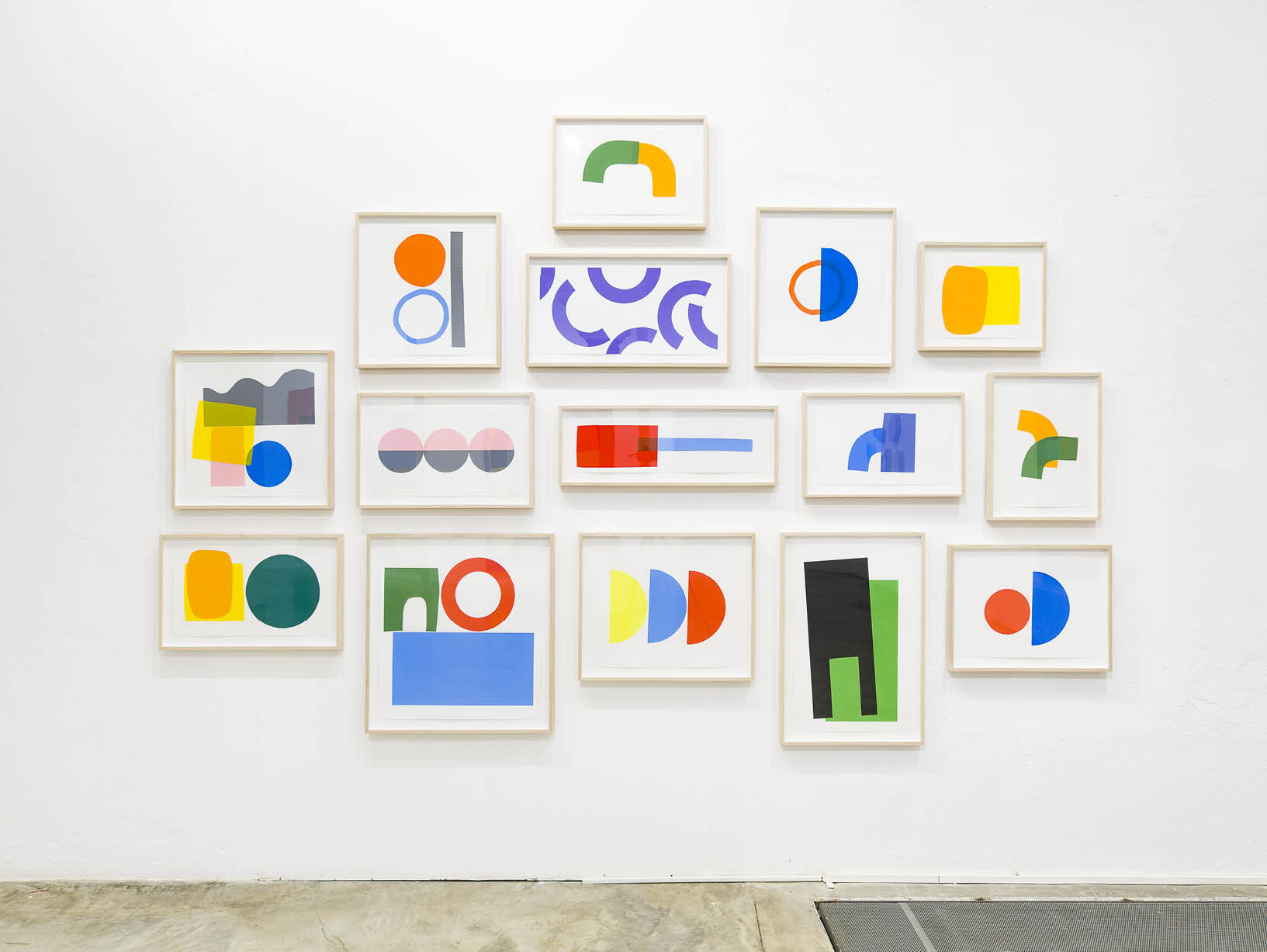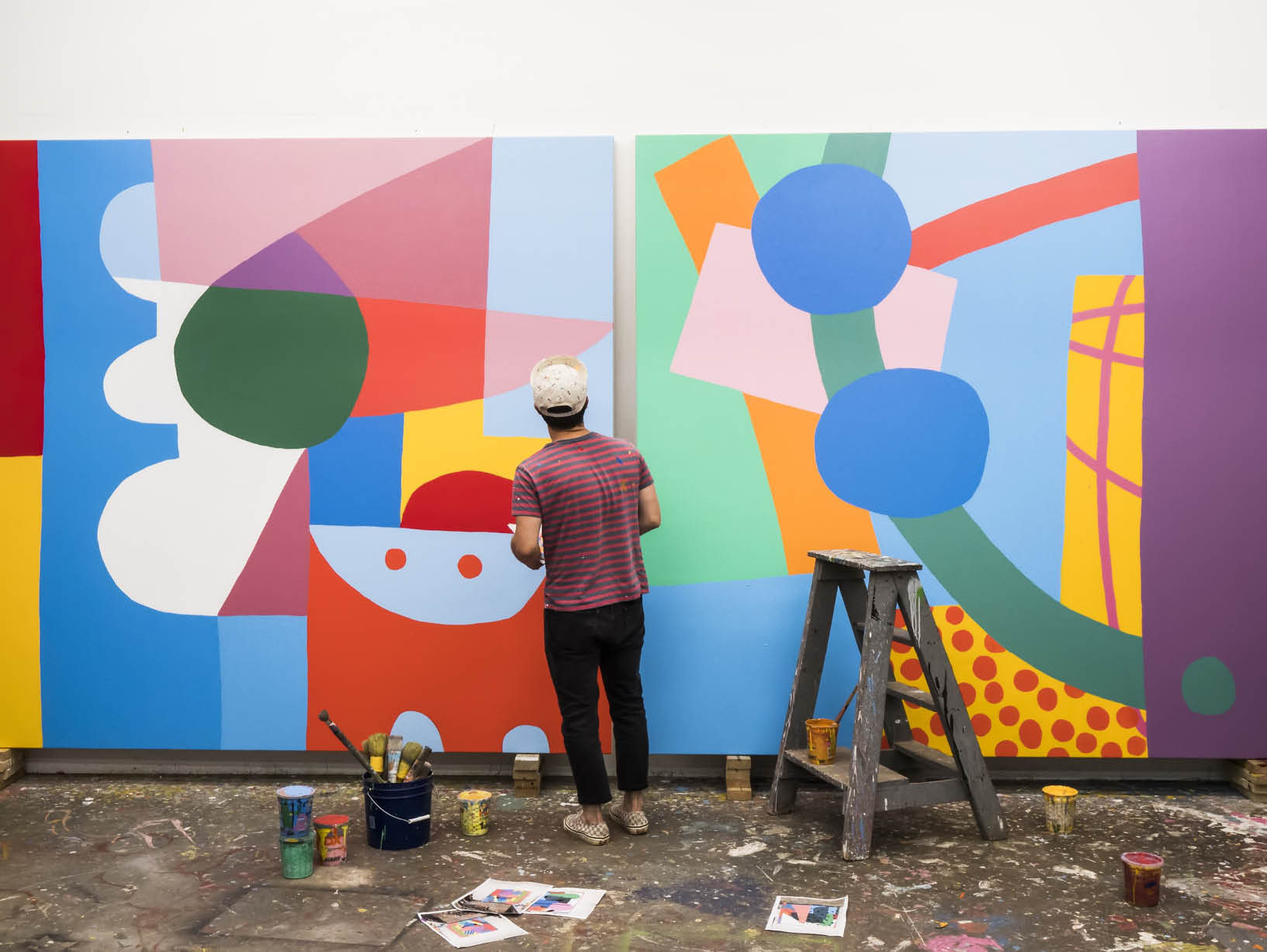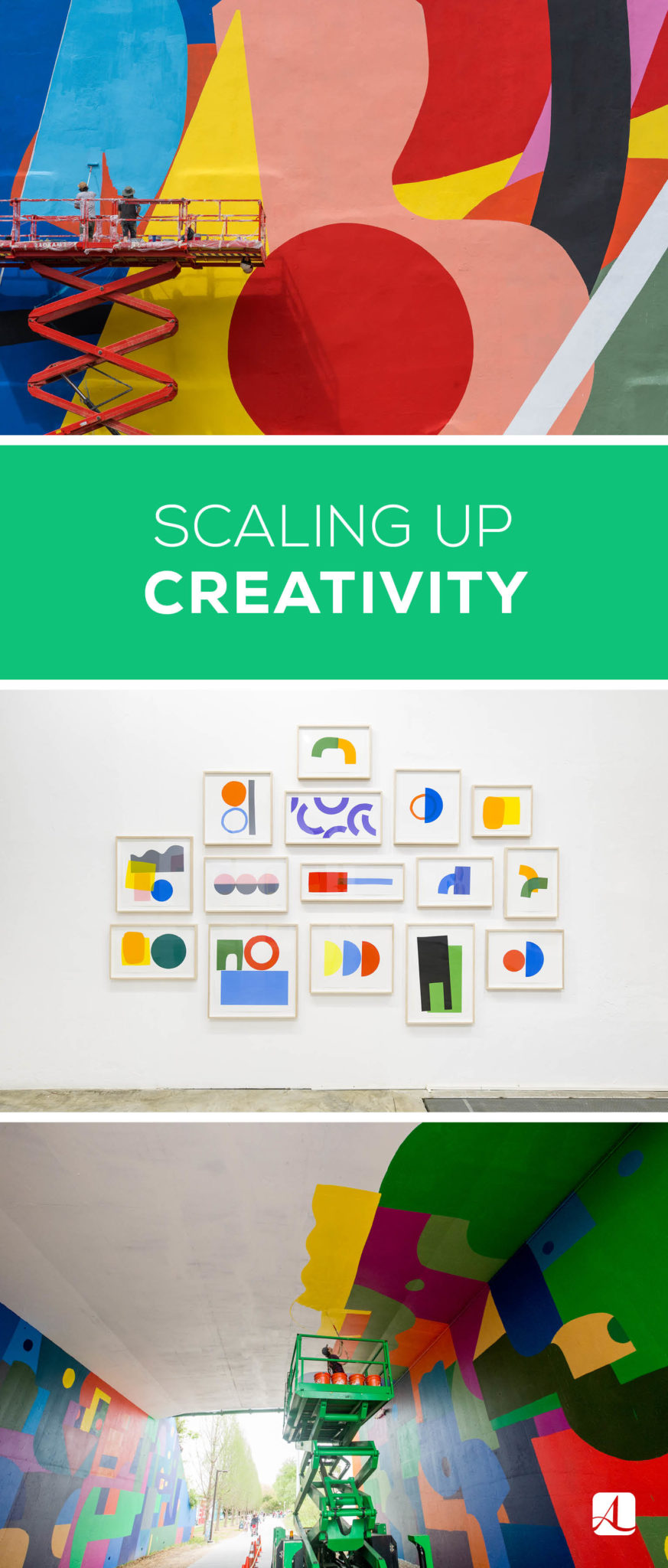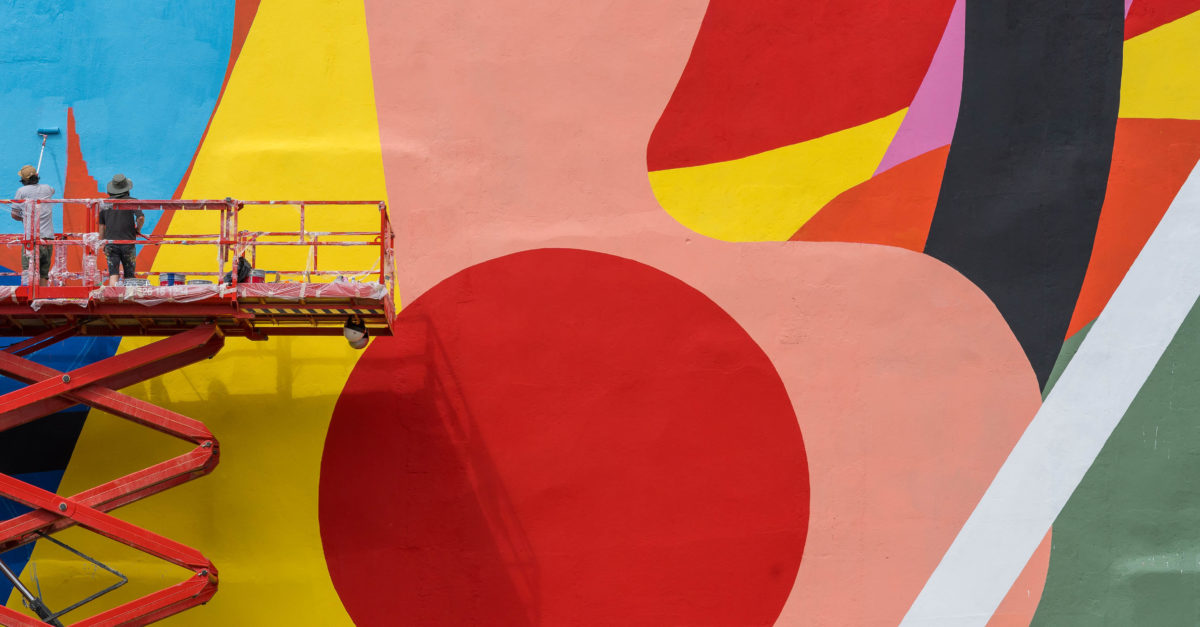Scaling Up Creativity
© Benjamin Roudet | Photography as noted.
Inspired by modernist architecture and design, as well as graffiti, artist Alex Brewer’s current works include large-scale outdoor murals and sculptures.

Where did you grow up? What did the path to professional artist look like?
I grew up in Atlanta, Georgia. I would say my path was somewhat unorthodox, but I was interested in art at a young age so the transition to full-time artist felt natural.
Was there a pivotal moment when you decided to follow your path as an artist?
My parents both had backgrounds in architecture and design, which helped inform my interest in creativity. I don’t know if there was a specific moment when I decided to pursue art, but I do remember being inspired by watching artist documentaries on PBS as a child. I also recall a visit to the home of artist Howard Finster and being completely blown away by his work. In the early 1990s, my friends and I discovered graffiti, and that had a big influence on me creatively.
You’ve long been known by your artist name, HENSE. Where did that name come from?
I started using the name HENSE when I was around fourteen or fifteen. It really came out of graffiti writing. I had gone through several other names and decided to look through a dictionary one day. The word “hence” caught my eye. I liked the curves of the letter S more, so I substituted the S for the C and painted pieces using HENSE throughout the 1990s and 2000s. It’s a name that has been a part of my creative life for so long, it just seems hard to abandon it.

How would you describe your style?
I generally move between hard-edged, shape-based abstractions and a painting style with a looser approach that explores mark making. With all of my work, I try to remain open-minded for experimentation. My public art projects generally relate to architecture, scale, and space. All of my 2D work is mostly about playing with color, form, and the composition in a particular picture plane. Lately, I’ve moved into sculptural explorations using steel and wood to construct 3D forms. The sculptural work references some of the colors and forms used in my murals.
The first works I exhibited in a gallery were line drawings made with ink on paper. These were mostly done in black and had various patterns and shapes incorporated into them. During this time, I was also still doing a lot of graffiti. In 2008 and 2009, I began experimenting with some of the same line work and shapes in outdoor mural projects. From there, my studio practice and public work evolved, and I started to use a larger color spectrum. I feel like both practices still help inform each other today.

Who or what has influenced you?
I was always inspired by modernist architecture and design, as well as graffiti, abstract expressionism, graphic design, and minimalism. I also really like the bold colors and forms used by Matisse and sculptor Alexander Calder, as well as Sol LeWitt’s wall drawings.
Will you talk about your process when creating a piece of art? How do you think about color and shape?
It really depends on the project. If I’m in the studio, I’ll try different approaches to get new results. Sometimes I’ll create mockups in Photoshop and use those to execute my paintings. Other times, I’ll just start working on something and it takes me in an entirely new direction. If I feel like I’m getting stuck on a piece, I’ll either start something new or take it into the computer to superimpose various ideas. When working on a large public project, I try to at least have a rough idea of direction before I begin. In the past, I would be completely spontaneous with the painting, but I’ve learned over the years it’s really helpful to have a starting point to guide the first stages.
I always consider color and form, but I think about composition and balance as well. In the case of working in public spaces, I consider the architecture and human relationship to the artwork.

How do you know when to throw in the towel on a piece and start over versus continuing to work on it?
I find this to be one of the most difficult parts of art making. I would say that I’m generally trying to find a certain balance that feels right.
Is there a designer from a past era you would have liked to have coffee with?
I would have liked to have coffee with any of the faculty of the Bauhaus—a school of architecture, art, and design in Germany.
Have you ever had a moment when you questioned your career?
I don’t think I’ve ever questioned my career choice, but I’m constantly questioning my work. I think that’s normal for an artist. I struggle with self-doubt at times and have to fight it off. I try not to let it consume me, though, as most creatives seem to deal with some form of doubt or creative block. I find that taking a break can help or shift focus to another aspect of my practice. Ultimately, I’m grateful and feel lucky to be able to do what I love for a living.
What environment do you work best in?
Sometimes working in public spaces can be challenging. There have been times where I’ve had to change my working schedule to avoid too many interruptions. Like most creatives, I prefer a quiet working environment. My studio is probably my favorite space to work in.
Large-scale art seems to be your comfort zone. What do you like about it? What is challenging?
Scale seems to have always been a part of my work. Thinking back to the late 1990s and early 2000s, when I was most active as a graffiti artist, scale and material were an integral part of the work. Painting big in the studio feels natural for me, and I think that’s because of those years of working outside on so many different surfaces. The physical part is very challenging but also rewarding at the same time. I feel like I learn something new with every project, which is a fun aspect of it. Of course, there are bumps in the road and challenges, but those come with any large project.
What drives you to keep creating?
I like to keep things moving and updating my ideas—trying new materials or experimenting with new concepts. I try to find the inspiration to keep going. Thankfully, there isn’t a shortage of that these days.
Do you have any advice for emerging artists?
I probably should take my own advice, but here are a few thoughts: work hard and don’t be afraid to be original, use setbacks or challenges to propel you, and try to be patient.
For more info, visit hensethename.com






















